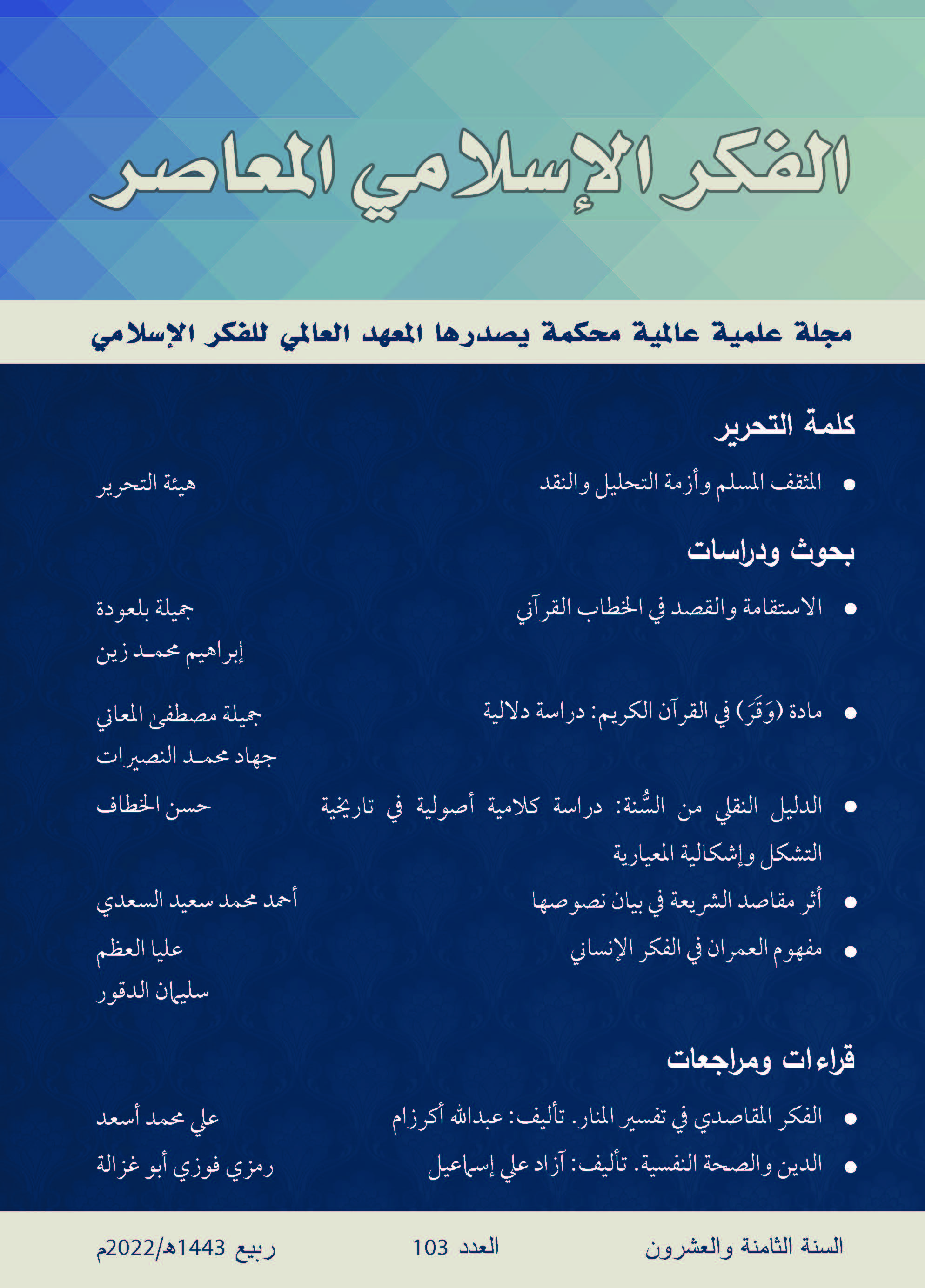Abstract
The study discusses the function of the higher purposes of Shariʿah (maqāṣid al-Sharīʿah) in the fundamental processes of tafsīr (exegesis), ta’wīl (allegorical interpretation), tarjīḥ (establishment of preponderance), takhṣīṣ (specification), and taqyīd (restriction). The function of maqāṣid al-Sharīʿah in the explanation of religious texts is twofold: controlling the interpretation of the text by excluding meanings that contradict these maqāṣid, on the one hand, and expanding the text’s interpretation by adopting a linguistically non-preponderant meaning because it is indicated by maqāṣid, on the other hand. Maqāṣid, whether general (ʿāmm) or specific (khāṣṣ), impact the semantics of the words: for looking at the partial intent (al-maqṣid al-juz’ī), then linking it to the specific intent (al-maqṣid al-khāṣṣ), leading to the general intent (al-maqṣid al-ʿāmm), produces a vision that allows no error in perceiving the meaning, except to the extent of the jurist’s lack of awareness of maqāṣid. The study shows that the explanation of religious texts rests on two mutually supportive principles: muqtaḍā qawāʿid al-dalālah (the mandatory rules of semantics) and the maqāṣid al-Sharīʿah. The study concludes that maqāṣidī ijtihād can provide disciplined, scientific rulings and plausible views regarding many controversial issues, whether contemporary or past. It can also provide Islamic solutions to the fast accelerating scientific developments.





